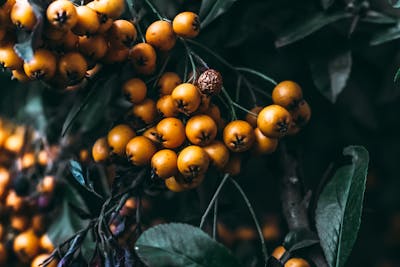- Get link
- X
- Other Apps
Creating a Year-Round Flower Garden with Seasonal Plants
A year-round flower garden can bring continuous beauty and interest to your outdoor space. By carefully selecting plants that bloom in different seasons, you can ensure that your garden remains vibrant and colorful throughout the entire year. Here’s how to plan and create a garden that offers floral splendor in every season.
Understanding Seasonal Blooms
To achieve a garden that blooms year-round, it's essential to understand the blooming periods of various plants. By incorporating a mix of early spring, summer, fall, and winter bloomers, you can create a dynamic garden that offers visual appeal throughout the year.
Spring Blooms
Spring is the season of renewal and fresh beginnings. It’s a time when many plants emerge from winter dormancy and burst into bloom.
Popular Spring Flowers:
- Daffodils: Known for their bright yellow blooms, daffodils are one of the first flowers to appear in spring.
- Tulips: Tulips offer a wide range of colors and shapes, providing a striking display in early spring.
- Creeping Phlox: This ground cover plant produces a carpet of colorful flowers in shades of pink, purple, and white.
Summer Blooms
Summer is a time of full bloom and lush growth. It’s the season when many garden plants reach their peak.
Popular Summer Flowers:
- Sunflowers: These tall, vibrant flowers add a cheerful touch to summer gardens.
- Roses: With their diverse varieties and long blooming period, roses are a summer staple.
- Lavender: Known for its fragrant purple blooms, lavender is perfect for summer gardens.
Fall Blooms
As the weather cools and the days shorten, fall brings a new array of flowering plants that thrive in the cooler temperatures.
Popular Fall Flowers:
- Chrysanthemums: These classic autumn flowers come in various colors and shapes, adding warmth to fall gardens.
- Asters: Asters provide vibrant color in shades of purple, blue, and pink, extending the bloom season into late fall.
- Sedums: Their unique texture and clusters of tiny flowers make sedums a favorite in fall gardens.
Winter Blooms
Even in the coldest months, there are hardy plants that offer color and interest to the winter garden.
Popular Winter Flowers:
- Poinsettias: Known for their festive red and green foliage, poinsettias add a touch of holiday cheer.
- Camellias: These evergreen shrubs bloom in late fall and winter, providing elegance to the winter landscape.
- Hellebores: Also called Christmas Roses, hellebores bloom in mid to late winter, offering beautiful nodding flowers.
Planning Your Year-Round Garden
Creating a year-round flower garden involves thoughtful planning and selection of plants that bloom at different times of the year.
1. Assess Your Garden Conditions
Before selecting plants, assess your garden’s conditions, including soil type, sunlight exposure, and climate. This will help you choose plants that are well-suited to your garden’s environment.
2. Choose a Mix of Blooming Plants
To ensure continuous blooms, select a variety of plants that flower in different seasons. For example:
- Early Spring: Daffodils and tulips.
- Mid-Spring: Peonies and irises.
- Summer: Sunflowers and roses.
- Fall: Chrysanthemums and asters.
- Winter: Camellias and hellebores.
3. Plan for Planting and Maintenance
Arrange your plants in your garden based on their blooming periods and growing requirements. Consider the height and spread of each plant to ensure a balanced and harmonious design. Additionally, plan for seasonal maintenance tasks, such as pruning, deadheading, and mulching.
4. Incorporate Companion Plants
Pairing plants that have complementary blooming periods or colors can enhance the visual appeal of your garden. For example, combine spring bloomers with summer perennials, and fall flowers with winter-evergreens for a cohesive look.
Maintaining a Year-Round Garden
To keep your garden looking its best throughout the year, follow these maintenance tips:
- Regular Watering: Ensure plants receive adequate water, especially during dry periods.
- Mulching: Apply mulch to retain soil moisture and regulate temperature.
- Fertilizing: Use appropriate fertilizers to support healthy growth and blooming.
- Pruning: Remove spent blooms and dead foliage to encourage new growth and maintain plant health.
Conclusion
Creating a year-round flower garden involves selecting plants that offer blooms in each season, from the early spring to the depths of winter. By planning carefully and choosing a diverse range of flowering plants, you can ensure that your garden remains vibrant and full of life throughout the year. With the right combination of spring, summer, fall, and winter blooms, your garden will provide beauty and joy in every season.
- Get link
- X
- Other Apps

Comments
Post a Comment